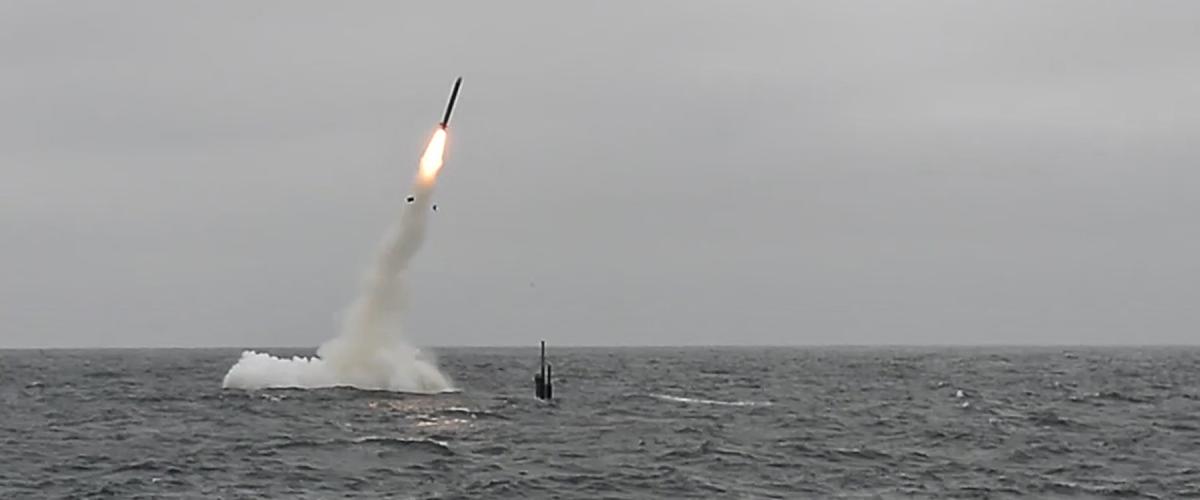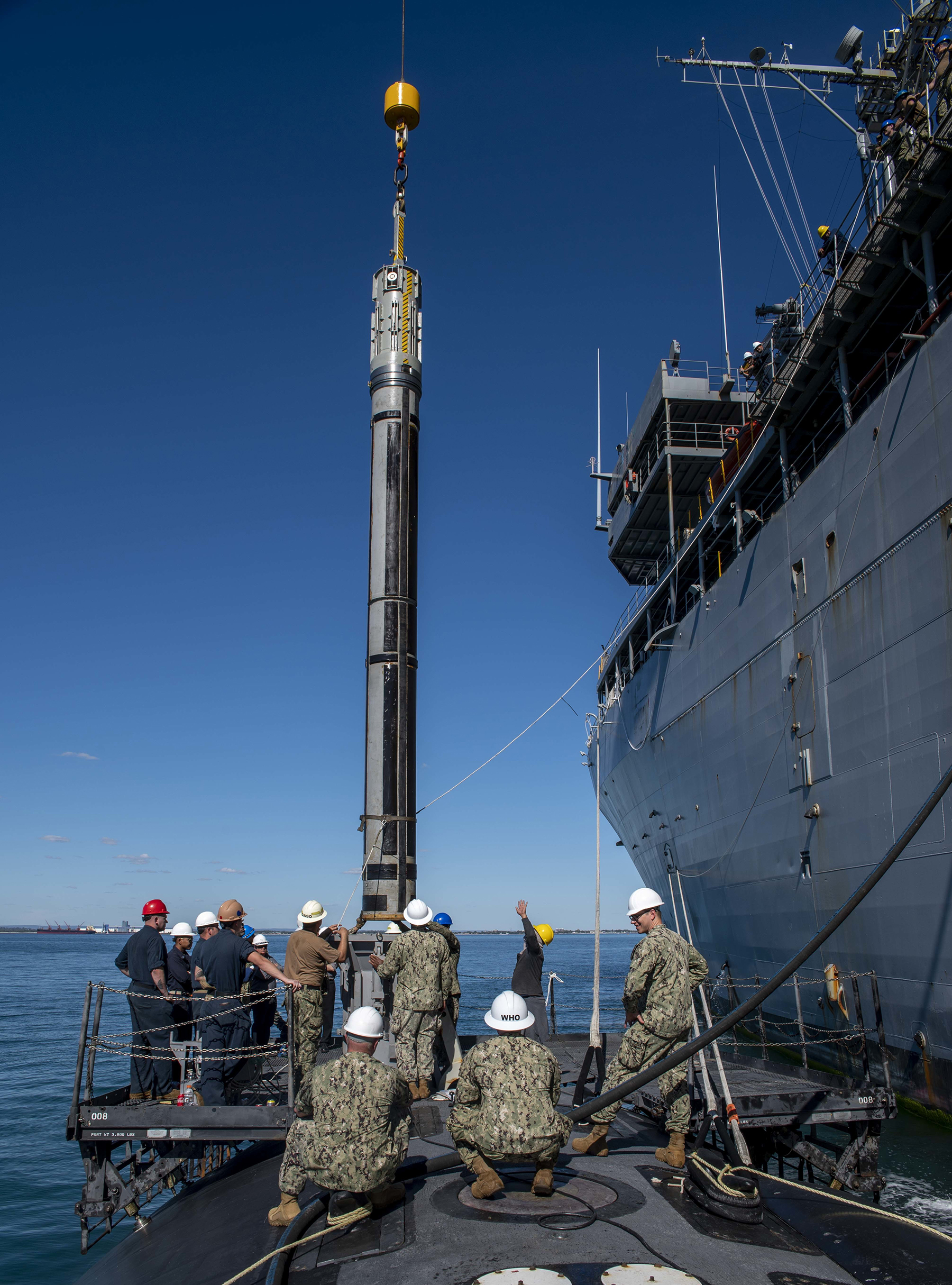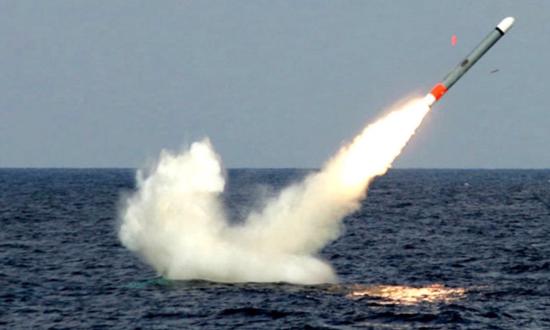The end of the Cold War bred an illusion of permanence. Events have forced optimists to shed their pretenses about the end of power politics. The so-called rules-based international order is coming apart. Norms are voluntary; principles considered sacrosanct since 1945—such as sovereignty and nonintervention in the internal affairs of other states—have proven to be conditional. History’s underlying reality is that peace requires equilibrium. But managing the balance of power is in part psychological: a perceived equality of power will not be challenged. It is not only the possession of power that contributes to stability, but also the will to bring it to bear. The renewed danger of nuclear war will turn U.S. inhibitions about it into a weapon in the hands of those determined to challenge global equilibrium.
The United States insists on aggression becoming unambiguous before it merits resistance—as if the means of aggression are more important than the ends it serves.1 Even when aggression is unambiguous, U.S. leaders sometimes redefine “red lines” in terms that are unlikely to be met. Adversaries have reintroduced low-yield nuclear weapons into their arsenals, which contributes to this irresolution. Effective U.S. resistance to aggression therefore may turn on its establishment of a low-yield nuclear deterrent, and the Navy will be integral to making such a deterrent survivable and credible.
Massive Retaliation and its Discontents
Under President Dwight D. Eisenhower, the United States introduced the doctrine of “massive retaliation,” which stated that the United States would react to any aggressive Soviet move with a nuclear attack on Soviet territory. The doctrine was based on a U.S. nuclear monopoly; when the Soviets balanced the nuclear equation, it placed the United States in an untenable position. Any time the Soviet Union committed an act of aggression, a U.S. president would face choices between risking U.S. cities to defend distant allies or capitulating. No president would be willing to sacrifice American cities over a limited objective, so submission would be the only option. This produced the risk that Russia—whose historic proclivity was incremental expansion—would commit acts of aggression short of those that would cause a nuclear war, but the accumulation of which would lead to Soviet hegemony over Eurasia. U.S. nuclear inhibitions were fodder for an enemy whose favorite tactic was nuclear blackmail.
This placed the onus on conventional forces, in which the United States and NATO were numerically inferior. Now the balance of power operated on two levels: in the traditional, geopolitical sense; and in the mutual effort to deter a nuclear first strike. A common solution was found in “limited” nuclear war, exemplified by rapidly deployable expeditionary forces armed with low-yield, “battlefield” nuclear weapons.6 Such weapons allowed U.S. leaders to respond to a threat at the level at which it arose and would help offset the disparity in conventional forces between NATO and the Soviets.
Deterrence in a New Nuclear Age
The 2018 Nuclear Posture Review expressed U.S. anxieties at the perceived low-yield gap left by increased Russian production of tactical nuclear weapons. Russian doctrine does not enumerate the purported principle of “escalate to deescalate” or how it might be implemented. Yet the notion is enough to cause handwringing as to how the United States would respond to the first use of low-yield nuclear weapons during a conventional conflict. Such fears could result in paralysis in the face of aggression.
The war in Ukraine illustrates the dilemma. At each stage of the conflict, the United States has tied itself in knots over what can be done to aid Ukraine without risking a full-blown conventional or, especially, nuclear confrontation with Russia. In a conventional war over limited objectives, the reaction to defeat is unlikely to be a global murder-suicide. The danger, therefore, is not strategic but “tactical” nuclear weapons—evinced by discussions in major U.S. newspapers of Russian advantages in the type of nuclear weapon that Moscow is “likely to use.”
The Western response of military aid and economic sanctions has shrouded this problem. NATO’s explicit rejection of any possibility of direct intervention likely provided Russia with a safety net for aggression. It also marked a clear limit to U.S. support for Ukraine’s survival. It is not a great logical leap to assume that the same fears will emerge in the event of an attack on Poland, the Baltics, or Taiwan. If any confrontation with Russia—or China—over any issue perforce risks nuclear annihilation, it begs the question of what, if anything, the United States deems worth risking nuclear war to defend.
The inability of the United States to react proportionately to the use of low-yield nuclear weapons incentivizes nuclear blackmail as a means of isolating an opponent from its ally and undermining the basis of deterrence. The worst action the United States could take would be to accept small-scale use of low-yield weapons, which would only provide incentives to bad actors to threaten the use of such weapons to gain the upper hand in international relations.
The theoretical dividing line between tactical and strategic weapons no longer holds, if it ever did. Nevertheless, the ability to escalate within a theater of conflict is imperative, and the United States must again develop some notion of limited nuclear war for its proclamations to remain credible. Others have expressed the need to credibly convince Russia that the United States is willing to “trade Vilnius for New York” to defend NATO. The ability to respond to low-yield use with low-yield use might avoid testing that conviction.
Credibility means that one’s word can be trusted by allies and opponents alike. This historically means following through on one’s threats; for nuclear weapons, credibility requires doctrine. How does one employ these weapons, and how does one keep such a war limited? This is not purely a military problem. Diplomacy and power are not discrete but mark the endpoints of a spectrum. Power without diplomacy is aimless; diplomacy without power is sterile. What is now referred to as “limited war” is often misunderstood. “Limited” traditionally refers to objectives, not means. Strategy is the quest to define a correspondence between power and one’s will to apply it; war is an attempt to make resistance more painful than capitulation. Nuclear weapons upset these relationships, as their all-out use deprives victory of its historic meaning. One cannot exact any further penalties from a society that has been destroyed.
Throughout any war over a limited objective, the opponent must be presented with a settlement that appears preferable to continuing the conflict. This keeps means and ends in rough proportion and incentivizes the losing side to make peace rapidly to prevent further losses. So long as mutual assured destruction remains plausible, both sides in a nuclear war over limited objectives will seek to keep that use of nuclear weapons proportionate unless one side believes its survival is under immediate threat. The task of diplomacy in this context therefore is to communicate that the opponent’s survival is not under threat.
Merging diplomacy and force thus makes limited nuclear war theoretically feasible, which is the foundation of doctrine. Communicating limited aims does not guarantee that escalation is impossible. But the U.S. refusal to consider how it would wage a limited nuclear war only increases the probability that aggressors will make nuclear threats to create a protective umbrella against conventional attacks. The best means of preventing such a scenario from arising is to negate the advantage an aggressor thinks it derives from wielding such threats.
Implementation: The Need for a Maritime Low-Yield Option
Much has changed politically since the Cold War, but the United States’ task remains the same: preventing the peripheral regions of Eurasia from coming under the domination of a single power. Given existing nuclear agreements within NATO, there is a natural inclination to forward deploy existing weapons such as the B-61 gravity bomb to deter a Russian first use of low-yield weapons. This is the least controversial means of augmenting U.S. low-yield nuclear forces. Germany, Turkey, Italy, Belgium, and the Netherlands are all potential locations for such increased deployments.
In Asia, the problem is as much geographic as it is political. Deploying B-61s to U.S. possessions as well as forming arrangements for forward deployments in Japan, the Philippines, and Australia merits exploration as a way of mitigating the distances involved. Apart from Japan, however, these deployments would necessitate strategic bombers given the limited range of tactical U.S. aircraft, and forward-deployed aircraft are vulnerable to a first strike, nuclear or otherwise. Deterrence in Asia requires greater flexibility and survivability.
In the post–Intermediate-Range Nuclear Forces Treaty world, one possible solution would be to deploy medium-range nuclear weapons to Poland or elsewhere in Eastern Europe. But the experience of placing Pershing IIs in Germany in the 1980s ought to drive home the political costs associated with forward deploying land-based missiles. Even if it were feasible, the narrow geographic distribution of this deterrent threatens its survivability. For similar reasons, it is also unlikely that any land-based missile could be deployed in Asia.
A low-yield submarine-launched cruise missile (SLCM-N) might be a better solution. It is diplomatically the least fraught of possible delivery systems, and it ensures the deterrent’s survivability. Cruise missiles also promise a margin of safety over ballistic missiles because they reduce the risk of early warning systems interpreting their launch as the opening move in a total nuclear war. With modified visitation arrangements among allies such as “nuclear-free” New Zealand and Japan, rotational deployments of fast-attack submarines armed with SLCM-Ns would help mitigate the geographic difficulties posed by the Indo-Pacific.4
Indeed, U.S. Strategic Command’s Admiral Charles Richard expressed the need for a wider menu of low-yield options before the Senate Armed Services Committee in May 2022: “What you want to be able to do is offer the President any number of ways at which he might be able to create an effect that will change the opponent’s decision calculus and get them to refrain or otherwise seek negotiation vice continued hostility.” He explicitly advocated for an SLCM-N to address the gap: “[A] low-yield, non-ballistic capability to deter and respond without visible generation is necessary to provide a persistent, survivable, regional capability to deter adversaries, assure allies, provide flexible options, as well as complement existing capabilities.”5 The Navy’s role in this new dispensation, therefore, is to ensure a survivable deterrent, to multiply a U.S. president’s options, and to shore up a willingness to wage war against a nuclear-armed opponent. But only if the fate of the SLCM-N program is reconsidered in this context.
If the United States is unwilling to accept the reality of this new nuclear age, it will be unable to play its role in contributing to global equilibrium. U.S. policymakers and service chiefs alike must ask themselves what they fear more: the dangers they face, or the measures needed to redress them. The material, bureaucratic, and opportunity costs of reintroducing low-yield weapons to the U.S. submarine force—which are significant—must be weighed against the consequences of vulnerability. The Navy is indispensable to confronting these dangers, and the need for a survivable low-yield deterrent will only grow more evident with time.
1. Henry A. Kissinger, Nuclear Weapons and Foreign Policy, abridged editions (New York: W. W. Norton & Company, 1969), 21.
2. Kissinger, Nuclear Weapons and Foreign Policy.
3. Hans Rattinger, “Change Versus Continuity in West German Public Attitudes on National Security and Nuclear Weapons in the Early 1980s,” The Public Opinion Quarterly 51, no. 4 (1987): 495–521.
4. Stenographic Transcript Before the Subcommittee on Strategic Forces, “Committee on Armed Services United States Senate Hearing to Receive Testimony on the Nuclear Weapons Council,” 4 May 2022, Washington, D.C.






